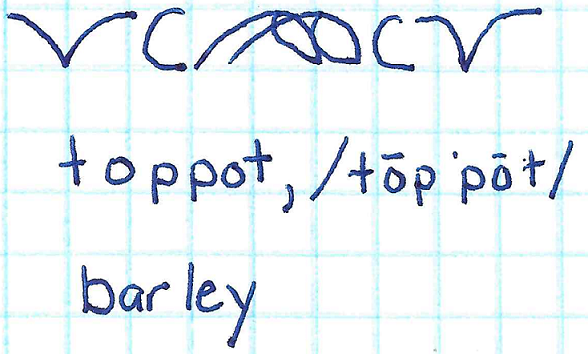Rix_Scaedu asked for braids. Woo-eee!
Braids are a really important part of Calenyena life and culture. What began as a simple method of keeping hair out of one’s face and off one’s neck became a complex and ever-evolving status and fashion symbol.
I’ve already got the words:
tezyu – goat-hair
lanut – braid
And lanutez – goat-hair braid: someone who is pretending to be something they’re not, a poser.
Braids can be pluralized, of course: Lanutte, lanutne, lanutbe. A collective of braids is a “head” of braids, generally at least six.
See here for images of words.
Calenyen braids vary: rarely does someone, male or female, wear a single braid in their hair, although men will sometimes braid one long braid in their beard.
However, paired braids, done in either a dutch or french style (See this post if the terms are foreign to you), are quite common. They speak of no-nonsense simplicity most of the time and are the hair equivalent of blue jeans today.
Lanut, by itself, refers to a 3-strand french style braid of hair, goat hair, or other hair on an animal. A braid of anything else is a langaip, both from the original lannun, plait, no longer in use.
Braids on the human head are almost always pluralized: lanutne if speaking in general, lanutbe for a full ‘do, lanutte for a two-plait arrangement.
Kalan is to make braids; kalanut is to plait someone’s hair while kalangaip is to plait other things.
A braid that is not french-style is called a hanging braid, lanut-pyik. A braid that is dutch-style is a standing braid, lanut-dob. Braids with more than 3 stands are often called by the number, thus, something like lanut-leen, lanut-dan – four- and five-strand braid.
And, just for one more word, beads for braids are lunlan.
This entry was originally posted at http://aldersprig.dreamwidth.org/1024170.html. You can comment here or there.
![]() lilfluff asked for words for games, and from there for words for winning and losing.
lilfluff asked for words for games, and from there for words for winning and losing.